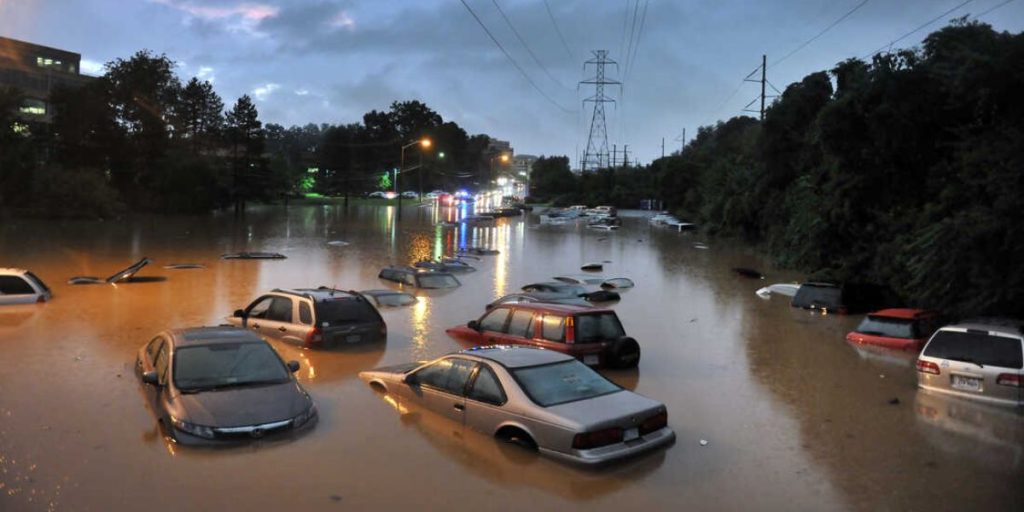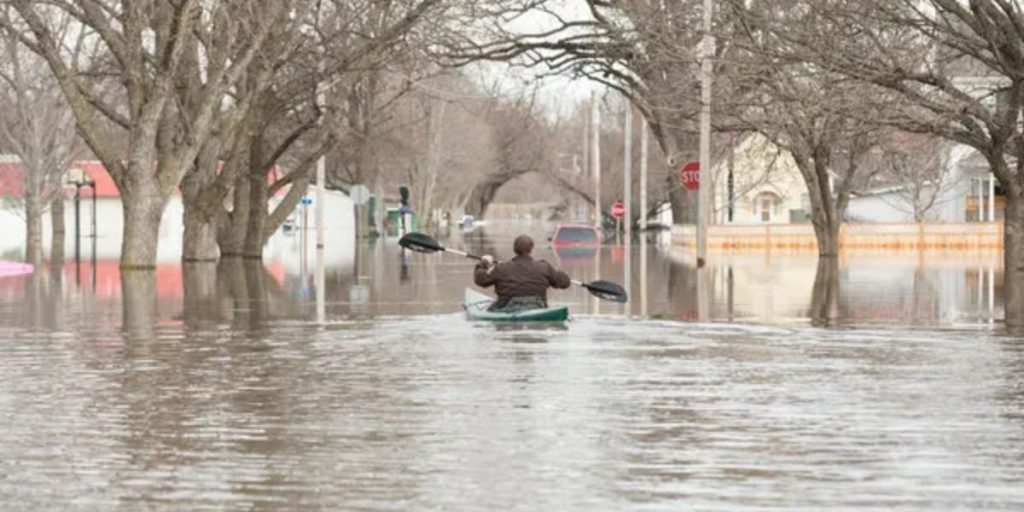Flooding is the most prevalent US natural disaster. Consequently, 114 flood-related deaths occur annually. In states with high numbers, experts say driving through flood waters causes many deaths. Which 5 US states flood most?
Texas
Some sources say Texas is one of the most flood-prone states. It has the deadliest floods in the nation. Over 200 people died in state floods between 2010 and 2022. About 70 of those deaths were from Hurricane Harvey’s 2017 flooding in Houston. From 1959 to 2014, the state experienced approximately 850 flood deaths.
The state’s size may contribute to its high flood rate. Floods across the state count because there is a lot of ground to cover. Texas has “flash flood alley.” Central Texas has significant metropolitan regions including Dallas, Austin, and San Antonio. The alley is in the center of the state, where the soil and geography facilitate floods. Strong storms from the Pacific Ocean, Great Plains, and Gulf of Mexico hit the region. When rain falls faster than rocky, clay-like soil can absorb, flooding develops.
Texas has seen over 500 flash floods in the past decade. Three 100-year floods occurred. Floods with a 1% annual probability.

Pennsylvania
Flooding has also plagued Pennsylvania. Some sources indicate Texas is the most flood-prone state, while others believe Pennsylvania is. Flooding in the state killed around 250 people between 1959 and 2014.
This flooding is partly due to the state’s abundance of water. The state is home to the Delaware, Susquehanna, and Ohio rivers. The levee system is inconsistent, making issues worse. Thus, a levee in one city may worsen riverside floods in others. Storm Lee in 2011 raised the Susquehanna River over 40 feet.
Louisiana
After Hurricane Katrina devastated New Orleans in 2005, Louisiana became known for flooding. The risk has always been high. Much of New Orleans is below sea level. Even typical stormwater doesn’t drain naturally. Pumps and levees safeguard the area. Hurricanes can create massive storm surges and flooding in the area. As climate change raises sea levels and storms increase stronger, New Orleans and the surrounding areas may face more floods in the next decades, according to experts.
Florida
Florida is another flood-prone state. A vast peninsula with 1,350 miles of coastline. The state features about 1,500 additional waterways. Over 11,000 miles of rivers, streams, and tributaries flow through the state. Beyond its watery ecology, the state receives 55 inches of rain annually, making it one of the top five rainiest states along with flood-prone Louisiana. Because the state is flat, floodwaters spread easily.
Storm frequency in the state increases flood risk. Fewer than 20 hurricane seasons without a Florida storm since 1851. Over 500 hurricanes or tropical storms have impacted the state in 170 years. Florida communities have been affected by hurricanes across the state. Hurricanes can devastate the entire state. Hurricane Irma left nearly three-quarters of the state without power. Hurricanes are very dangerous to Florida’s coast.
California
Due to dryness and inadequate water supplies, California is unlikely to be flood-prone. However, water shortages put it at risk of flooding. First, dry weather causes severe wildfires in the state. Flash floods are more likely in fire-ravaged areas because the ground cannot absorb water.
Even metropolitan regions in the state are at risk of floods since drainage systems can easily become blocked and enormous sections of pavement cannot absorb water.

Deserts, which are prone to flooding, cover much of the state. Rain is rare, but when it happens, rivers and streams run wild. Within an hour, they can become dangerous. In August 2022, flash floods at Death Valley National Park, the world’s hottest place, in the southeast portion of the state caused significant damage. In three hours, the area received 75% of its annual rainfall. A 1,000-year rainstorm. It has a 0.1% possibility per year.
Flood Safety Tips
These are the states with the greatest floods, however, flooding can happen anywhere there is water, even in locations considered too distant from a body of water. Know about flooding and remain safe:
- Follow all National Weather Service notifications and understand the terms.
- Urban and Small Stream Advice: Lower urban areas like storm drains and small streams may flood.
- Flood or flash flood statement: Flood follow-up alert.
- “Turn around, don’t drown” is memorable. Do not drive through floodwaters. Water depth is hard to measure. Most flood deaths occur when people drive through the water. These fatalities are avoidable. Turn around! Some cars can lose control of six inches of water.
- Turn off power and gas at the source to evacuate. Return home only once authorities say it’s safe.
- Never consume or cook with floodwater. It contains garbage, bacteria, chemicals, and other harmful substances.
- Discard flood-damaged food.
- Check your water for safety. Only drink bottled, boiled, or treated water under a “boil water advisory”.